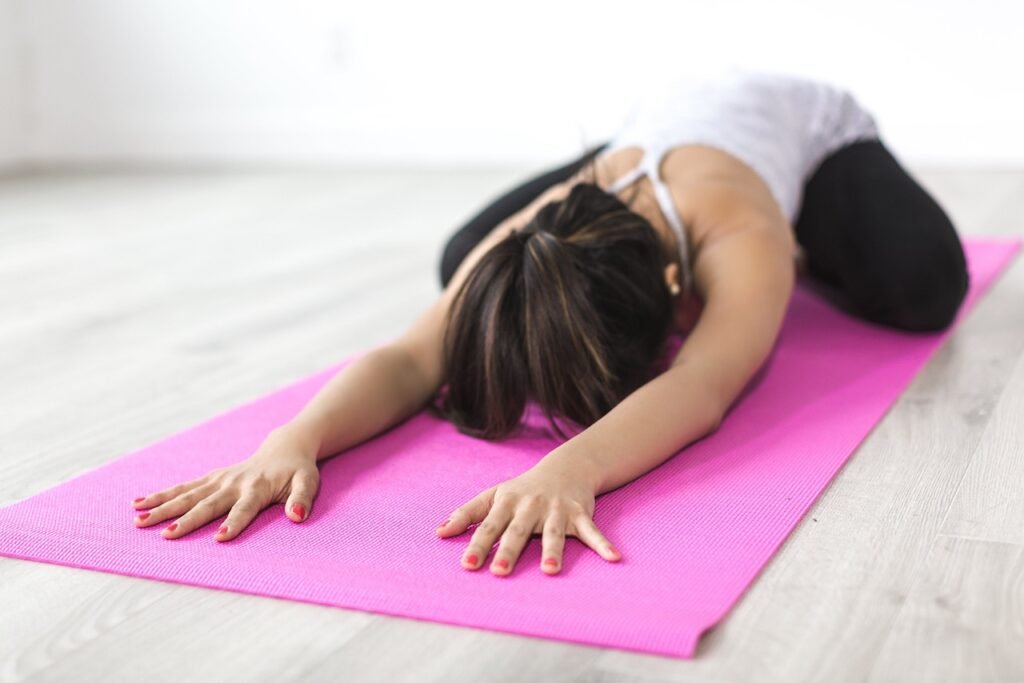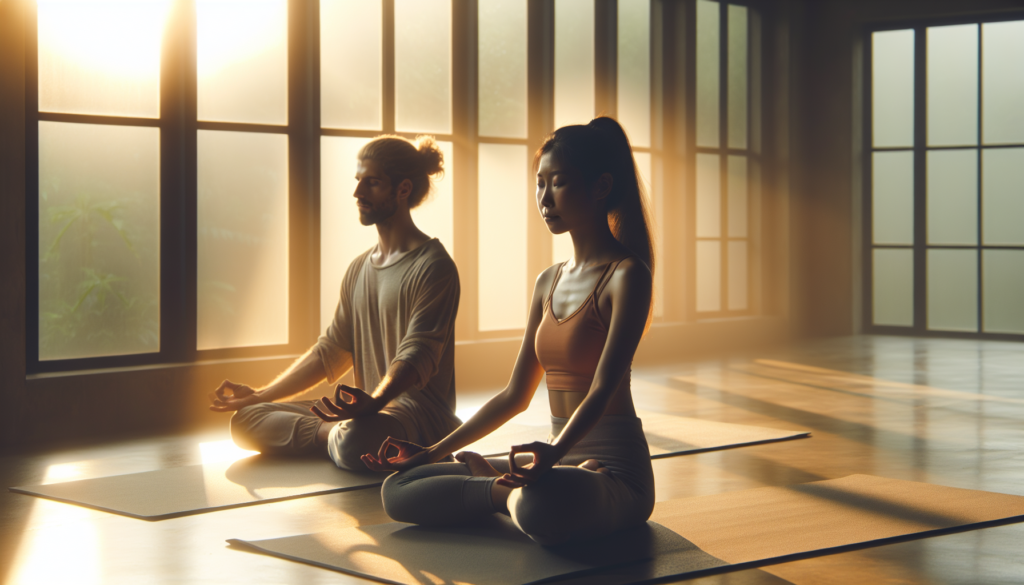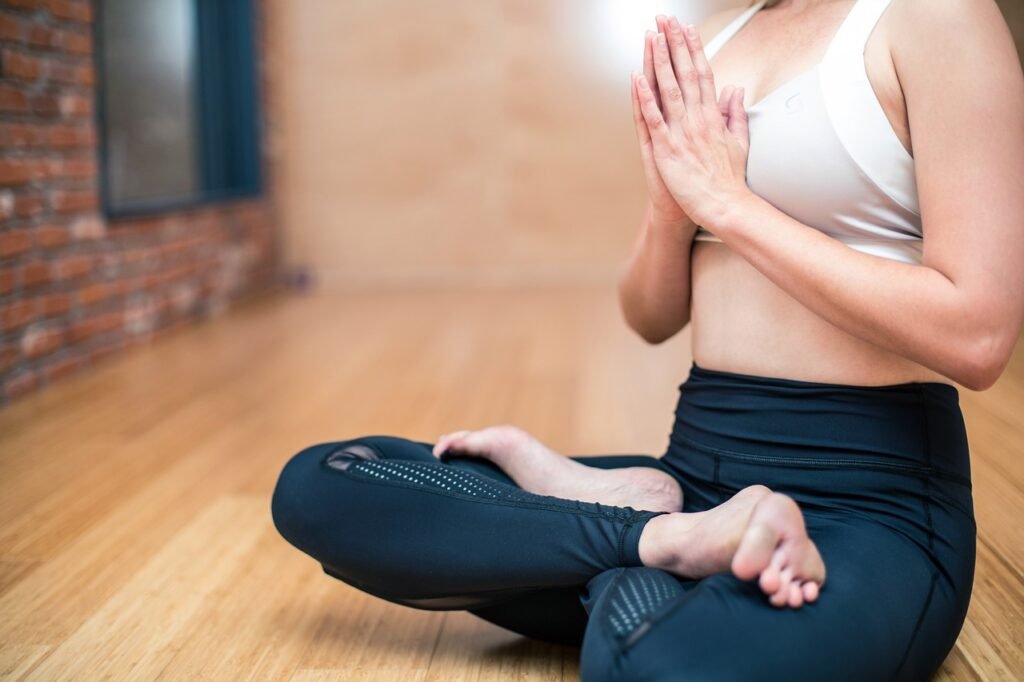Are you looking to start your day off on the right foot with a revitalizing yoga routine? Look no further! In this article, we will explore some fantastic yoga routines that you can easily practice from the comfort of your own home. Whether you’re a beginner or an experienced yogi, these routines will help you kickstart your morning with a sense of calm and rejuvenation. So grab your yoga mat and get ready to embrace a new and refreshing way to begin your day!
Sun Salutation
Overview
Sun Salutation, also known as Surya Namaskar, is a series of yoga poses that are combined to create a flowing sequence. It is a holistic practice that incorporates movement, breath, and mindfulness. Sun Salutation is a popular choice for a morning yoga routine as it helps to awaken the body, energize the mind, and set a positive tone for the day ahead.
Steps
To perform Sun Salutation, start by standing at the top of your mat with your feet hip-width apart. As you inhale, raise your arms overhead, reaching towards the sky. Exhale and fold forward, bringing your hands to the ground. Inhale and lift your torso halfway up, lengthening your spine. Exhale and step or jump back into a high plank pose, then lower down into a low plank pose. Inhale, lift your chest into upward-facing dog pose, and exhale into downward-facing dog pose. From there, step or jump your feet to your hands, inhale to lift halfway, and exhale to fold forward. Inhale, raise your arms overhead, and exhale to bring your hands back to your heart center. Repeat this sequence several times, coordinating each movement with your breath.
Benefits
Practicing Sun Salutation in the morning offers numerous benefits. It helps to increase flexibility and strength in the entire body, particularly the arms, shoulders, and legs. Sun Salutation also improves blood circulation, boosting vitality and providing a gentle cardiovascular workout. Additionally, this sequence helps to calm the mind, relieve stress, and promote mental clarity. It is a wonderful way to start the day, invigorating both the body and the mind.
Triangle Pose
Overview
Triangle Pose, also known as Trikonasana, is a standing pose that provides a deep stretch to the legs, hips, and torso. It is a fantastic addition to a morning yoga routine as it helps to improve overall balance, stability, and focus.
Steps
To practice Triangle Pose, start by standing at the top of your mat with your feet wide apart. Turn your right foot out 90 degrees and align your right heel with the arch of your left foot. Inhale and extend your arms out to the sides, parallel to the ground. As you exhale, reach your right hand towards your right shin, ankle, or the floor, and extend your left arm towards the sky. Keep your gaze on your left thumb. Hold this pose for a few breaths, feeling the stretch in your side body. Inhale to come back up, and repeat on the opposite side.
Benefits
Triangle Pose offers a range of benefits to the body and mind. It helps to stretch and strengthen the legs, hips, and hamstrings. This pose also improves digestion and stimulates the abdominal organs, promoting healthy digestion. Triangle Pose enhances overall body awareness, balance, and stability. It can also relieve stress and anxiety, bringing a sense of calm and focus to your morning practice.
Bridge Pose
Overview
Bridge Pose, also known as Setu Bandha Sarvangasana, is an invigorating backbend that opens the chest, stretches the spine, and strengthens the legs. It is an excellent addition to a morning yoga routine as it helps to energize the body, relieve tension in the back, and promote a positive mood.
Steps
To practice Bridge Pose, lie on your back with your knees bent and your feet hip-width apart. Your arms should be resting alongside your body, palms facing down. On an inhale, press your feet into the ground and lift your hips towards the ceiling, coming onto the top of your shoulders. Keep your chin slightly lifted and your gaze towards the sky or towards your chest. Hold the pose for a few breaths, feeling the stretch in your chest and the strength in your legs. To release, exhale and slowly lower your spine back down to the ground.
Benefits
Bridge Pose offers a wide range of benefits. It helps to open the chest and stretch the shoulders, relieving any tension or tightness in these areas. This pose also strengthens the legs, glutes, and back muscles, improving posture and stability. Bridge Pose can be an effective remedy for stress, anxiety, and mild depression, as it stimulates the nervous system and promotes a positive mood. It is a rejuvenating pose that can help you start your day with a sense of energy and vitality.
Cat-Cow Pose
Overview
Cat-Cow Pose, also known as Marjaryasana-Bitilasana, is a gentle flow between two complementary poses that helps to warm up the spine, increase flexibility, and release tension in the back and neck. It is an ideal addition to a morning yoga routine as it awakens the body, improves posture, and promotes a sense of grounding and relaxation.
Steps
To practice Cat-Cow Pose, start on your hands and knees, with your wrists directly under your shoulders and your knees under your hips. On an inhale, lift your chest and tailbone towards the ceiling, allowing your belly to sink towards the ground. This is the Cow Pose. On an exhale, round your spine, drawing your belly button towards your spine and tucking your chin towards your chest. This is the Cat Pose. Continue to move between these two poses, matching the movement to your breath. Inhale for Cow Pose and exhale for Cat Pose. Repeat this flow for several rounds, allowing your body to gently stretch and awaken.
Benefits
Cat-Cow Pose offers a wide range of benefits to both the body and mind. It helps to improve spinal flexibility, relieve tension in the back and neck, and increase blood circulation to the spinal discs. This pose also massages and stimulates the digestive organs, promoting healthy digestion. Cat-Cow Pose is a gentle flow that calms the nervous system, reduces stress, and enhances mental clarity. It is a beautiful way to begin your morning practice, setting the tone for a peaceful and balanced day.

This image is property of pixabay.com.
Downward Facing Dog Pose
Overview
Downward Facing Dog Pose, also known as Adho Mukha Svanasana, is a popular pose that provides a full-body stretch and strengthens the arms, shoulders, and legs. It is an excellent addition to a morning yoga routine as it energizes the body, improves posture, and enhances overall flexibility.
Steps
To practice Downward Facing Dog Pose, start on your hands and knees, with your hands shoulder-width apart and your knees hip-width apart. As you exhale, lift your knees off the ground and straighten your legs, coming into an upside-down V shape. Your hands should be pressing firmly into the mat, and your heels should be reaching towards the ground. Keep your head relaxed and your gaze towards your belly button. Hold this pose for several breaths, feeling the stretch in your hamstrings, calves, and shoulders. To release, bend your knees and return to a tabletop position.
Benefits
Downward Facing Dog Pose offers numerous benefits to the body and mind. It stretches the entire back of the body, including the hamstrings, calves, and spine. This pose also strengthens and tones the arms, shoulders, and upper body. Downward Facing Dog Pose is known to relieve symptoms of stress, anxiety, and mild depression by calming the mind and promoting deep breaths. It energizes the body and increases blood flow, leaving you feeling refreshed and revitalized. Practicing this pose in the morning can help you start your day with a sense of strength, balance, and mental clarity.
Warrior II Pose
Overview
Warrior II Pose, also known as Virabhadrasana II, is a powerful standing pose that builds strength in the legs, opens the hips and chest, and improves balance and focus. It is an excellent addition to a morning yoga routine as it helps to cultivate inner strength, confidence, and a sense of groundedness.
Steps
To practice Warrior II Pose, start by standing at the top of your mat with your feet wide apart. Turn your right foot out 90 degrees and align your right heel with the arch of your left foot. Bend your right knee over your right ankle, creating a 90-degree angle. Extend your arms out to the sides, parallel to the ground, with your palms facing down. Gaze over your right fingertips. Hold this pose for several breaths, feeling the strength and stability in your legs. To release, straighten your right leg and repeat on the opposite side.
Benefits
Warrior II Pose offers a wide range of physical and mental benefits. It strengthens and tones the legs, particularly the quadriceps and glutes. This pose also opens the hips, chest, and shoulders, improving overall flexibility and posture. Warrior II Pose is known for its grounding and empowering qualities, helping to cultivate inner strength and confidence. It can also enhance focus and concentration, allowing you to approach your day with a sense of clarity and purpose.

Child’s Pose
Overview
Child’s Pose, also known as Balasana, is a gentle resting pose that provides a deep stretch to the lower back, hips, and thighs. It is an excellent addition to a morning yoga routine as it promotes relaxation, relieves tension, and encourages a sense of surrender and introspection.
Steps
To practice Child’s Pose, start on your hands and knees, with your knees wider than hip-width apart and your big toes touching. Sit your hips back towards your heels and lower your torso towards the ground. Rest your forehead on the mat and extend your arms forward, allowing your chest to sink towards the ground. Take slow, deep breaths, feeling the stretch in your lower back and hips. Hold this pose for several breaths, allowing your body to relax and release any tension. To release, slowly walk your hands back towards your body, coming back to a seated position.
Benefits
Child’s Pose offers numerous benefits to the body and mind. It gently stretches the hips, thighs, and ankles, relieving any tension or tightness in these areas. This pose also provides a soothing stretch to the lower back, helping to release any built-up stress or fatigue. Child’s Pose is known for its calming and introspective qualities, promoting relaxation, and a deep sense of surrender. It allows you to tune into your breath, find stillness, and connect with your inner self. Incorporating Child’s Pose into your morning practice can help you set a peaceful and grounded tone for the day ahead.
Tree Pose
Overview
Tree Pose, also known as Vrksasana, is a balancing pose that strengthens the legs, improves balance, and promotes focus and concentration. It is an excellent addition to a morning yoga routine as it helps to cultivate stability, groundedness, and a sense of inner peace.
Steps
To practice Tree Pose, start by standing tall with your feet hip-width apart. Shift your weight onto your left foot and lift your right foot off the ground. Rest the sole of your right foot against your inner left thigh, avoiding the knee joint. Find your balance and bring your hands to your heart center, or extend your arms overhead, like branches reaching towards the sky. Keep your gaze focused on a fixed point in front of you. Hold this pose for several breaths, feeling rooted and stable. To release, lower your right foot back to the ground and repeat on the opposite side.
Benefits
Tree Pose offers a wide range of benefits to both the body and mind. It strengthens the legs, particularly the ankles, calves, and thighs. This pose also improves balance and stability, enhancing posture and overall body awareness. Tree Pose encourages focus and concentration, allowing you to cultivate a sense of centeredness and clarity. It can also promote a feeling of inner peace and connection with nature. Tree Pose is a beautiful way to start your morning practice, bringing a sense of stability, strength, and harmony to your day.

Seated Forward Bend
Overview
Seated Forward Bend, also known as Paschimottanasana, is a calming pose that provides a deep stretch to the hamstrings, lower back, and shoulders. It is an excellent addition to a morning yoga routine as it promotes relaxation, relieves tension, and encourages introspection and surrender.
Steps
To practice Seated Forward Bend, start by sitting on your mat with your legs extended in front of you. Inhale, lengthen your spine, and as you exhale, slowly fold forward from the hips. Reach towards your feet, ankles, or shins, depending on your flexibility. Allow your head and neck to relax, and breathe deeply into the stretch. Hold this pose for several breaths, feeling the sensations in your hamstrings and lower back. To release, slowly come back up to a seated position.
Benefits
Seated Forward Bend offers a variety of benefits to the body and mind. It stretches the entire back of the body, including the hamstrings, calves, and spine. This pose helps to calm the mind, relieve stress and anxiety, and promote a deep sense of relaxation. Seated Forward Bend also stimulates the kidneys, liver, and digestive organs, aiding in digestion and detoxification. It is a beautiful pose to practice in the morning, helping you find a sense of surrender, peace, and introspection as you prepare for the day ahead.
Conclusion
Incorporating a morning yoga routine into your daily life is a wonderful way to start the day with intention, mindfulness, and balance. The Sun Salutation, Triangle Pose, Bridge Pose, Cat-Cow Pose, Downward Facing Dog Pose, Warrior II Pose, Child’s Pose, Tree Pose, and Seated Forward Bend are fantastic poses to include in your morning practice. Each pose offers unique benefits to the body and mind, such as increased flexibility, strength, balance, and focus. Moreover, these poses can help relieve stress, promote relaxation, and promote a positive mood. By dedicating a few moments each morning to your yoga practice, you can set a positive tone for the day ahead, cultivate a sense of inner peace, and nurture your physical and mental well-being. So, roll out your mat, take a deep breath, and embrace the transformative power of a morning yoga routine. Namaste!

This image is property of pixabay.com.

